[Lupines: The Genus Lupinus East of the Cascade Mts. of Oregon and Washington]
Silky Lupine
Lupinus sericeus
Synonyms: Lupinus alpicola, Lupinus buckinghamii, Lupinus fikeranus, Lupinus flavicaulis, Lupinus flexuosus, Lupinus huilcoflorus Lupinus ornatus, Lupinus ramosus, Lupinus sericeus ssp. sericeus, Lupinus sericeus var. fikeranus, Lupinus sericeus var. flexuosus, Lupinus sericeus var. maximus, Lupinus sericeus var. sericeus, Lupinus sericeus var. subflexuosus, Lupinus sericeus var. wallowensis, Lupinus spiraeaphilus, Lupinus tuckerianus
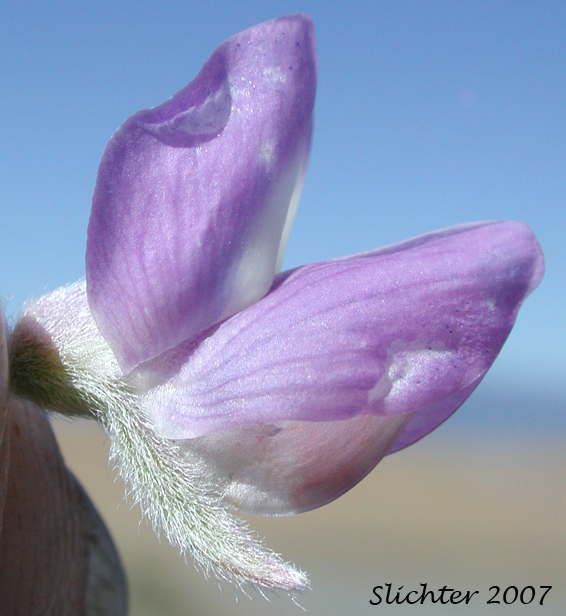
The photo above shows a close-up of the flower of silky lupine as seen from Zumwalt Prairie about 10 miles to the northeast of Enterprise, OR.........July 9, 2007. Note the large banner index of the banner in relation to the wings.
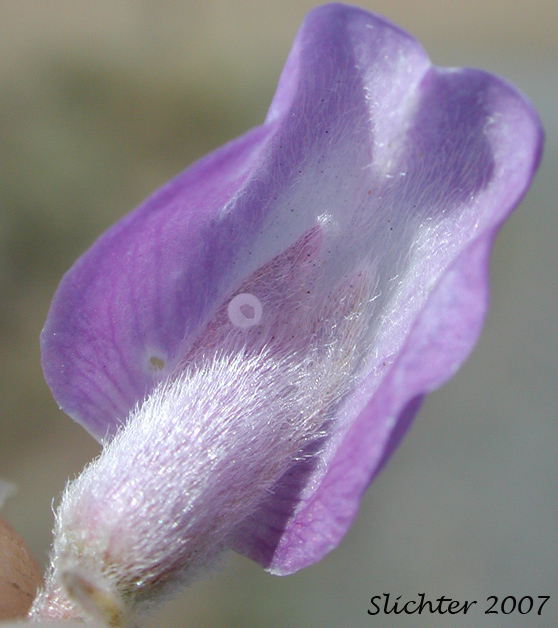 The photo at right shows a close-up of the hairs on the back of the banner of silky lupine as seen from Zumwalt Prairie about 10 miles to the northeast of Enterprise, OR..............July 9, 2007. The amount of hairiness on the back of the banner varies greatly, from found only around the calyx to widely covering the back of the banner as seen here. Note also the butterfly egg on the calyx.
The photo at right shows a close-up of the hairs on the back of the banner of silky lupine as seen from Zumwalt Prairie about 10 miles to the northeast of Enterprise, OR..............July 9, 2007. The amount of hairiness on the back of the banner varies greatly, from found only around the calyx to widely covering the back of the banner as seen here. Note also the butterfly egg on the calyx.
Characteristics:
Silky lupine is an attractive perennial which might be useful
for natural gardens in the drier habitats of the Pacific Northwest. The one
to several erect stems rise from 20-50 cm high. They are usually unbranched
or perhaps with several branches to the stem. The herbage is usually somewhat
silvery or rust-colo,re srom the numerous spreading to appressed hairs on the
leaves and stems. The herbage is not however, as dense and silvery as that found
in velvet lupine which may grow in the same habitats.
The hairs are of two lengths. The leaves are mainly on the stems (especially
at blooming times) with the lower petioles as much as 3 times longer than the
leaf blades. The leaves become reduce on the upper stems with the petioles roughly
the same length as the blades. The leaves are palmately-compound with 7-9 oblanceolate
leaflets, each 3-6 cm long and 3-6 mm wide.
The inflorescence is an elongate raceme of numerous, fairly
densely clustered flowers. The racemes vary in length from 10-15 cm long. The
flowers are largely a soft blue with a lavender tinge with 2 white markings
on the banner petal. The flowers may occasionally be yellowish or whitish. The
back of the banner is sparsely to densely haired with microscopic hairs. The
calyx is silky with a deeply split calyx. The upper lobe is bidentated while
the lower is entire. The banner is well reflexed from the keel with an index
from 14-25. The keel has ciliate hairs along much of its upper edge. The tip
of the keel turns upwards slightly. The pods are silky, ranging in length from
2-3 cm long and about 1 cm wide. They contain 3-5 seeds.
Habitat:
Silky lupine may be found on well drained soils on canyon slopes, ridges from
the lowlands to well up in the mountains. It is most typically found on grasslands
but may also be found in climax ponderosa pine amongst bunchgrasses.
Range
Silky lupine maybe found from British Columbia south to the east of the Cascade
Mts. to California and east to Alberta and New Mexico, with the eastern range
in the US occurring in the Rocky Mts.
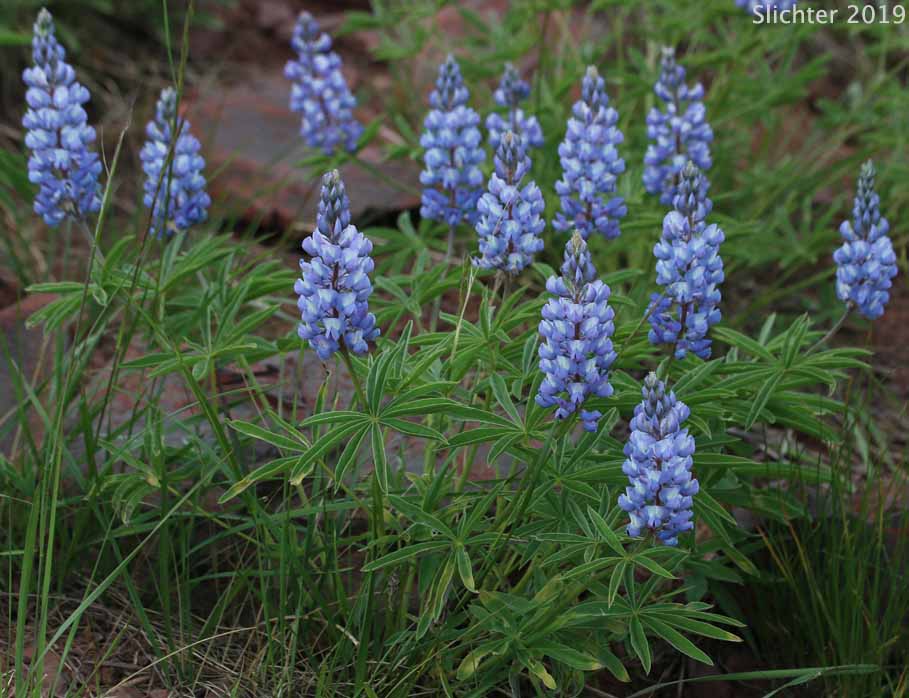 -
- 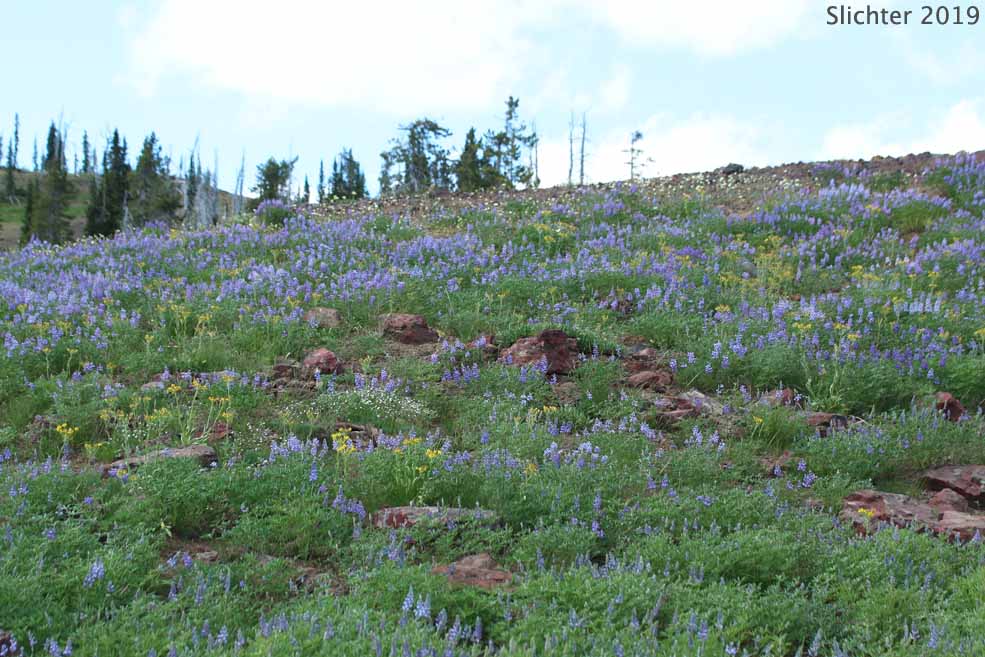
Silky lupines beginning to bloom above 7000' above Sugarloaf Reservoir on the southeastern slopes of Sugarloaf Mountain, Wallowa-Whitman National Forest.......July 18, 2019.
 -
- 
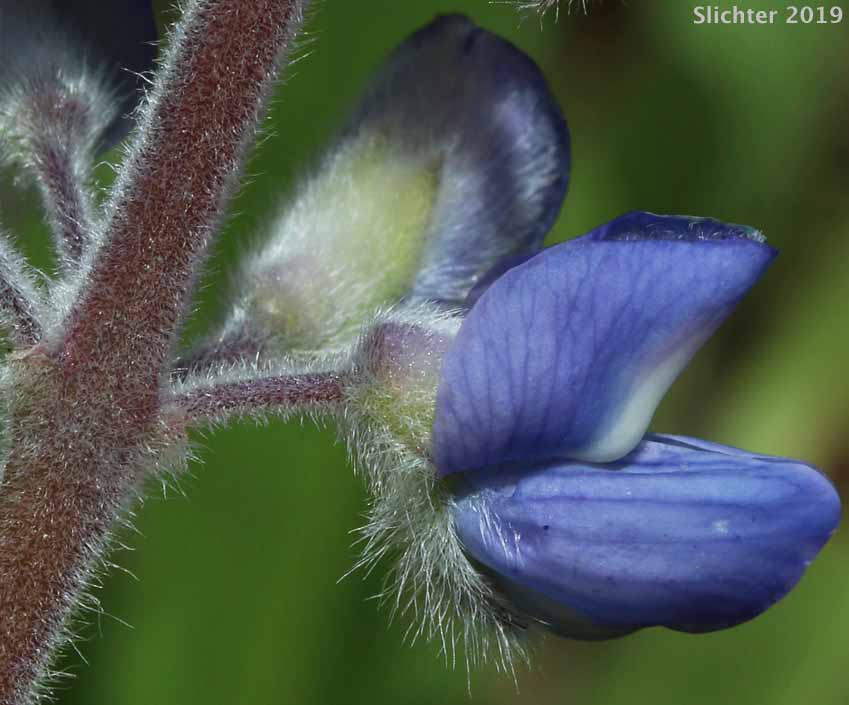 -
- 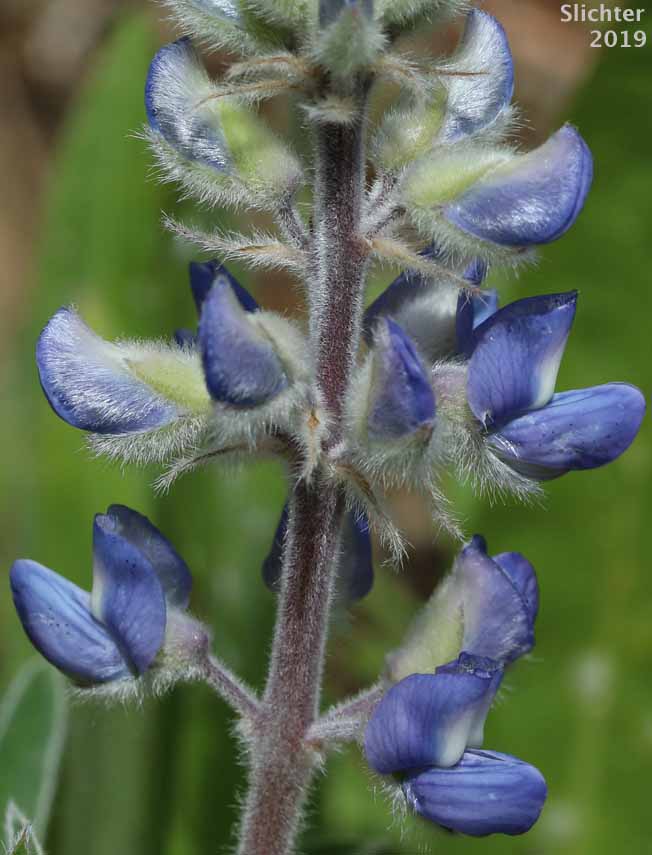
Silky lupine beginning to bloom along the Lick Creek Trail #1809, Hells Canyon National Recreation Area......July 17, 2019.
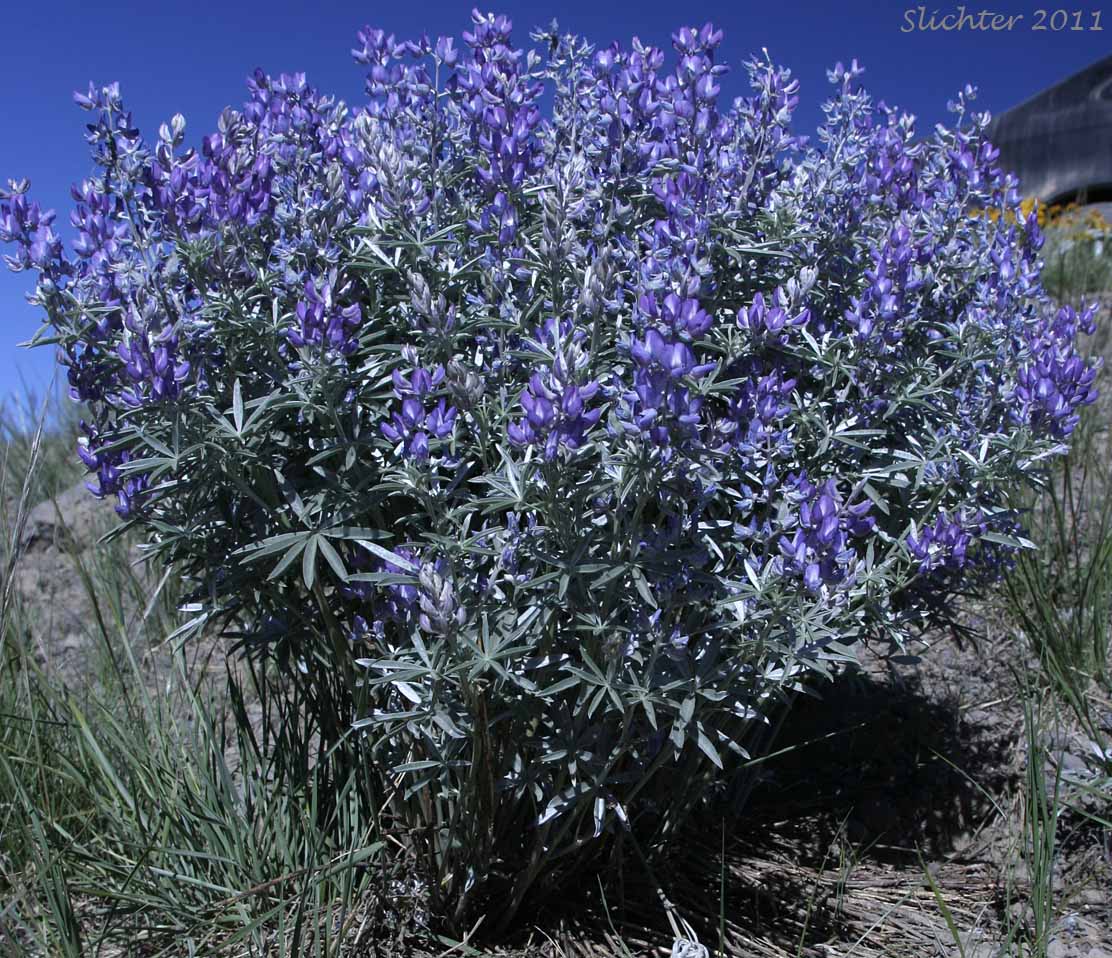
Silky lupine blooming along the North Loop Road about one mile downhill to the west of the Kiger Gorge Overlook, Steens Mountain, Harney County, Oregon.........September 2, 2011.
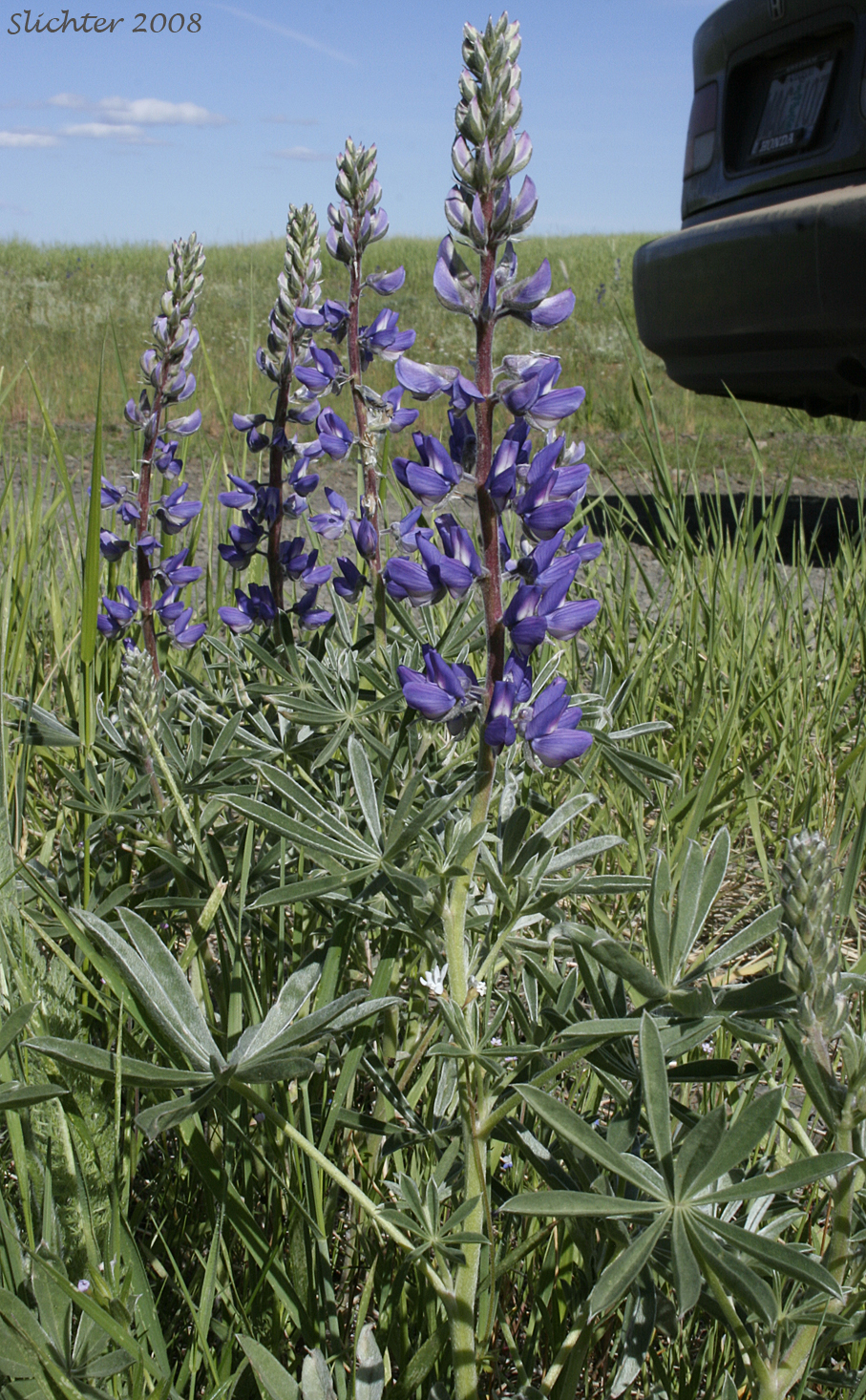 -
- 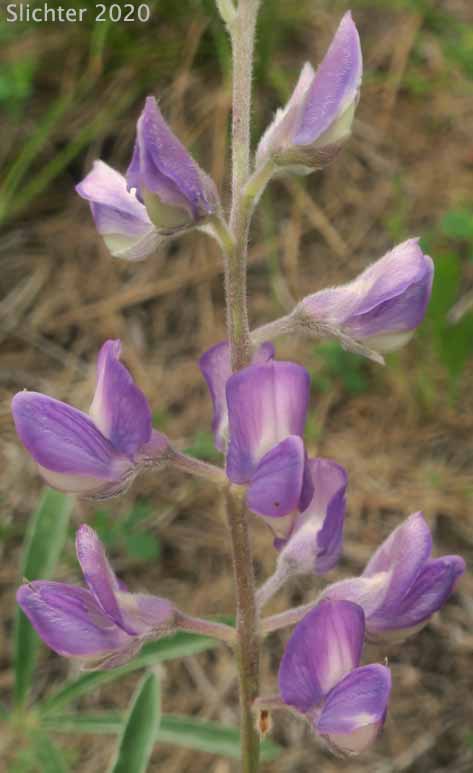
The photo at left shows silky lupine as seen in grasslands found along Cold Springs Road in northern Hells Canyon National Recreation Area.........June 26, 2008. The photo at right showsa close up view of the inflorescence of silky lupine as seen in open pine forest on Missoula Flood sandbars above the Little Spokane River.......June 27, 2020.
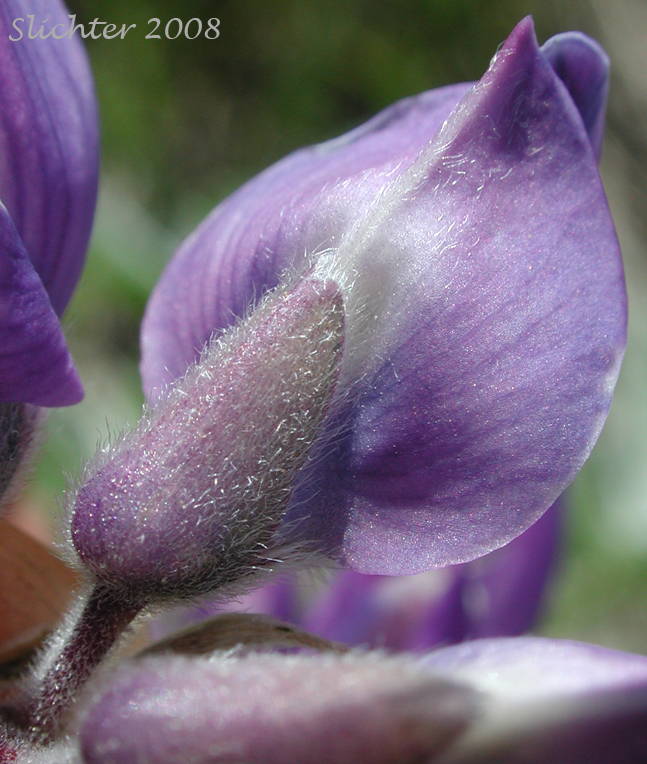 -
- 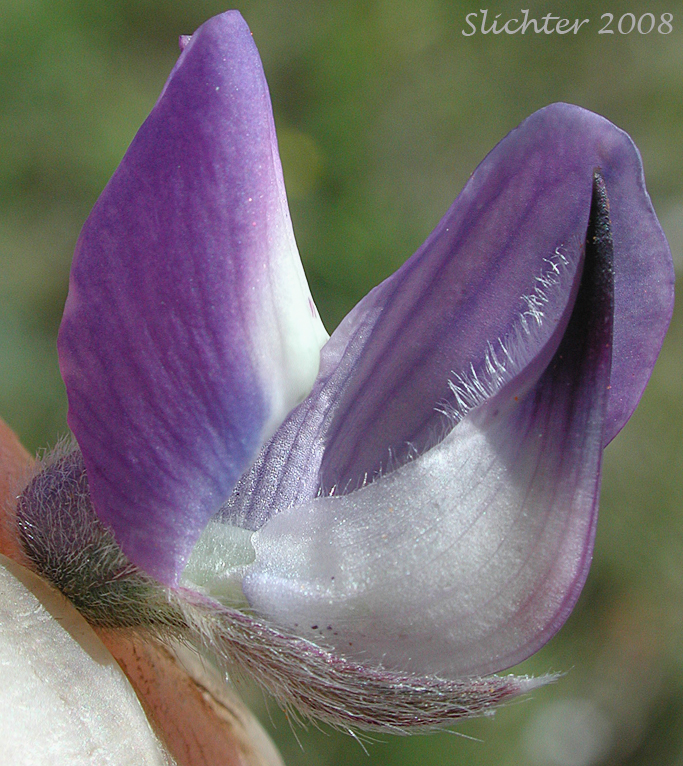
The photo above above left shows a close-up of the back of the baner of silky lupine. Note the numerous hairs which run from the tip of the calyx to the tip of the baner. The photo at right shows a close-up of the ciliate-margined keel. Both photos are from the grasslands found along Cold Springs Road in northern Hells Canyon National Recreation Area........June 26, 2008.
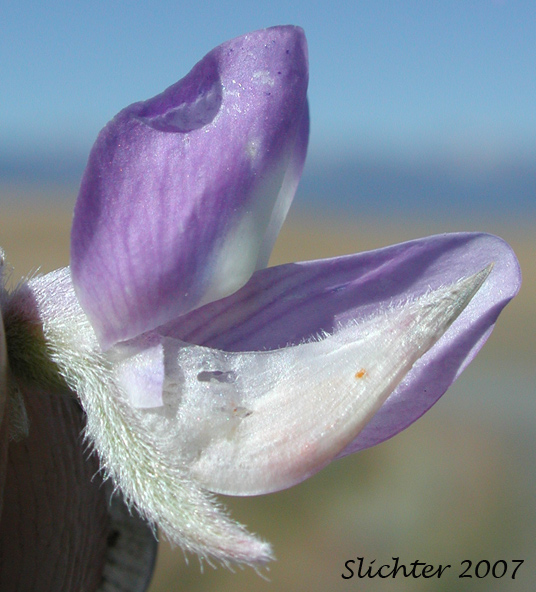
The photo above shows a close-up of the keel of silky lupine as seen from Zumwalt Prairie about 10 miles to the northeast of Enterprise, OR........July 9, 2007. Note the numerous hairs lining the upper margin of the keel.
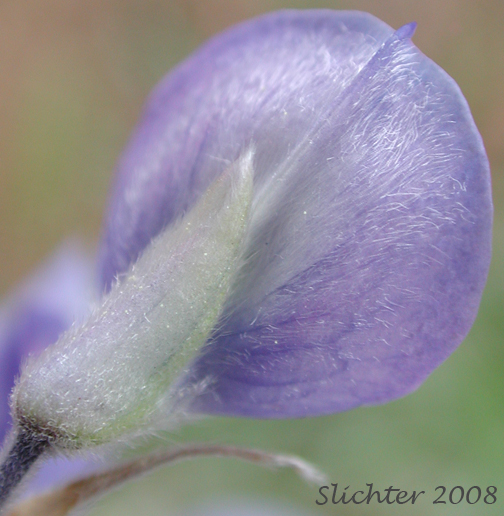 -
- 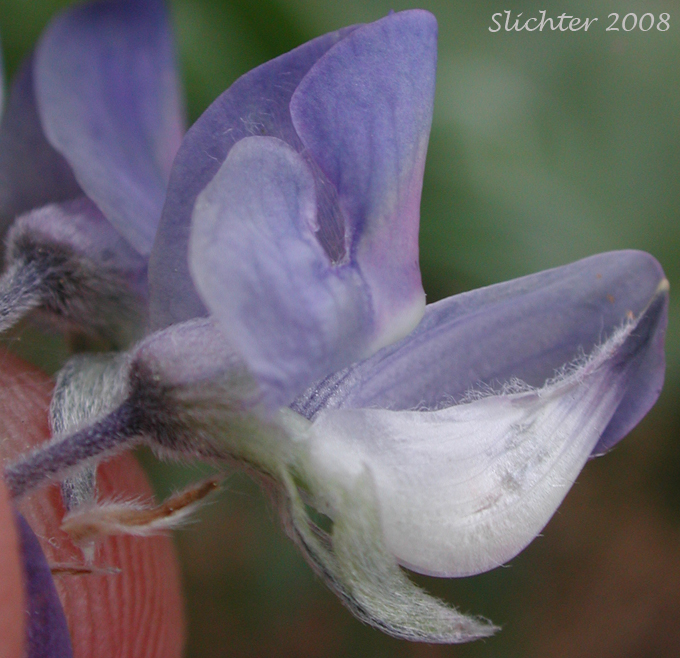 -
- 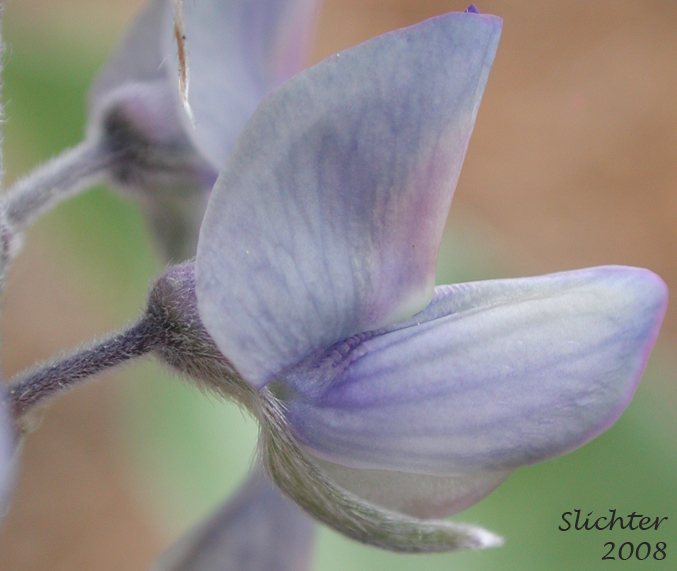
The 3 photos above shows close-up views of the flowers of silky lupine (var. sericeus) as seen in open coniferous forest near the Little Spokane River north of Spokane, WA...........May 31, 2008. Note the numerous hairs on the back of the banner of this variety.
 -
- 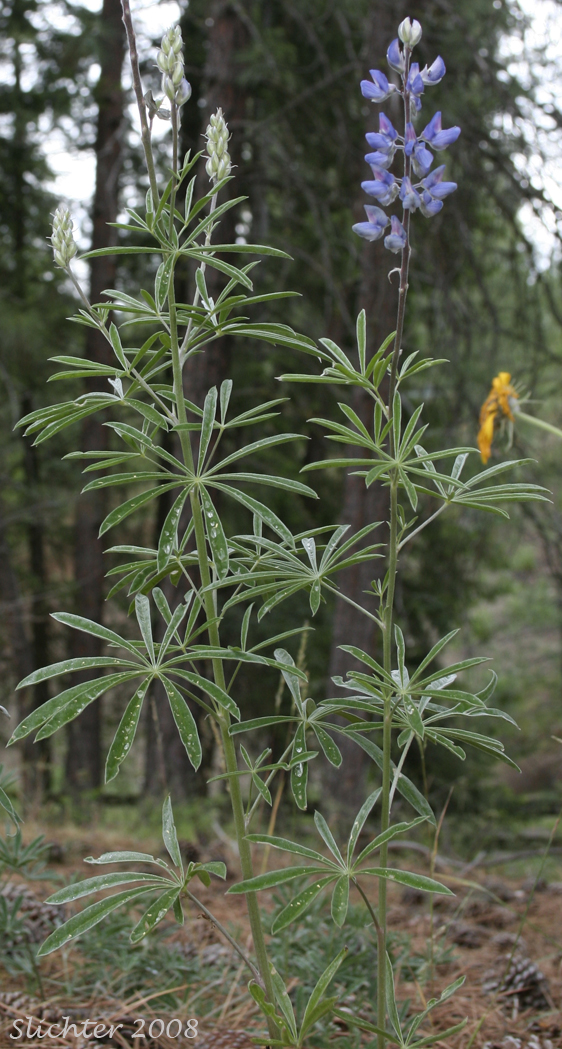 -
- 
The 3 photos above show views of silky lupine (var. sericeus) as seen in open coniferous forest near the Little Spokane River north of Spokane, WA.........May 31, 2008.
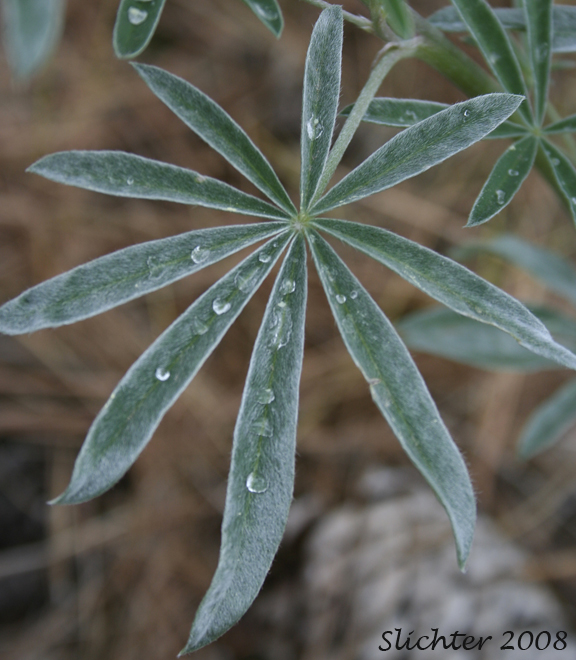 -
- 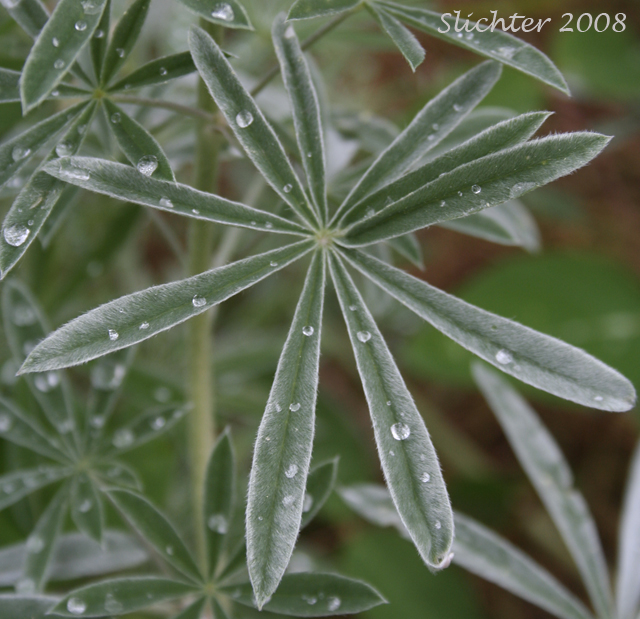 -
- 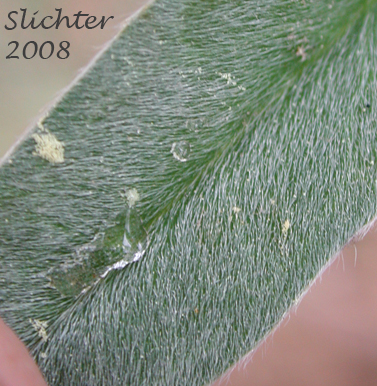
The 3 photos above show close-up views of the leavess of silky lupine (var. sericeus) as seen in open coniferous forest near the Little Spokane River north of Spokane, WA..........May 31, 2008. Note the numerous hairs on the upper surface of the leaflet at right.
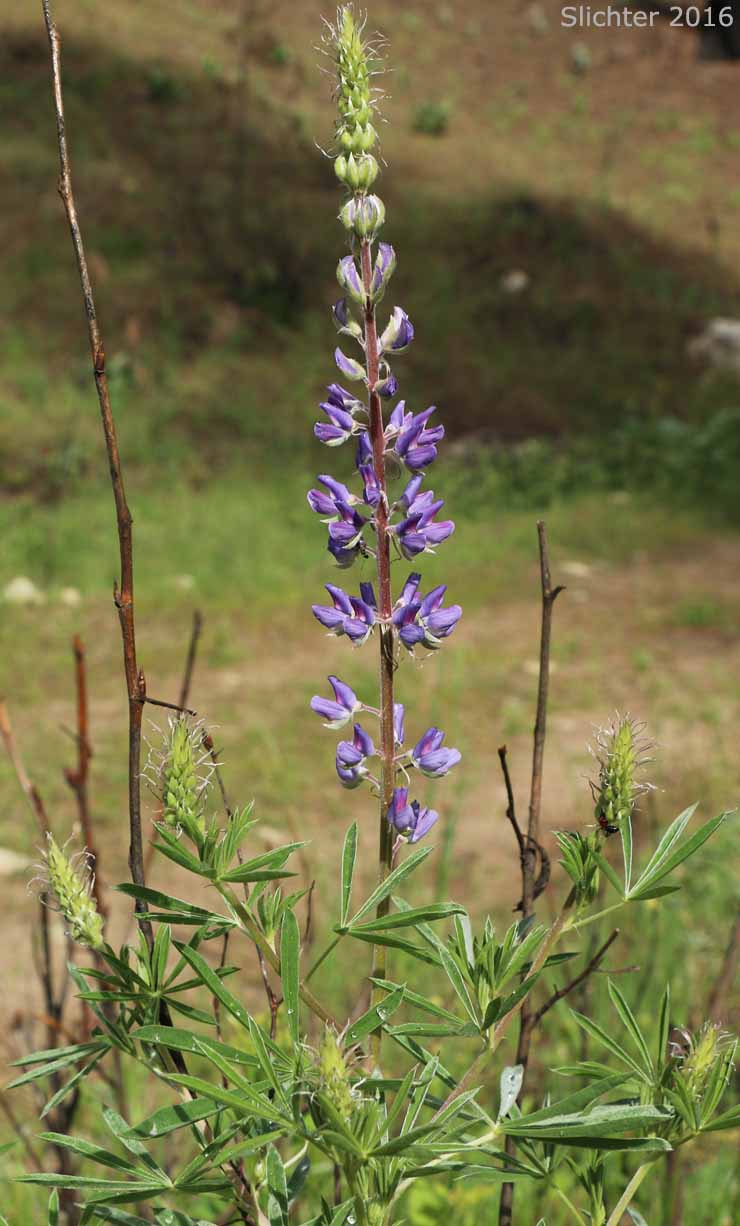 -
- 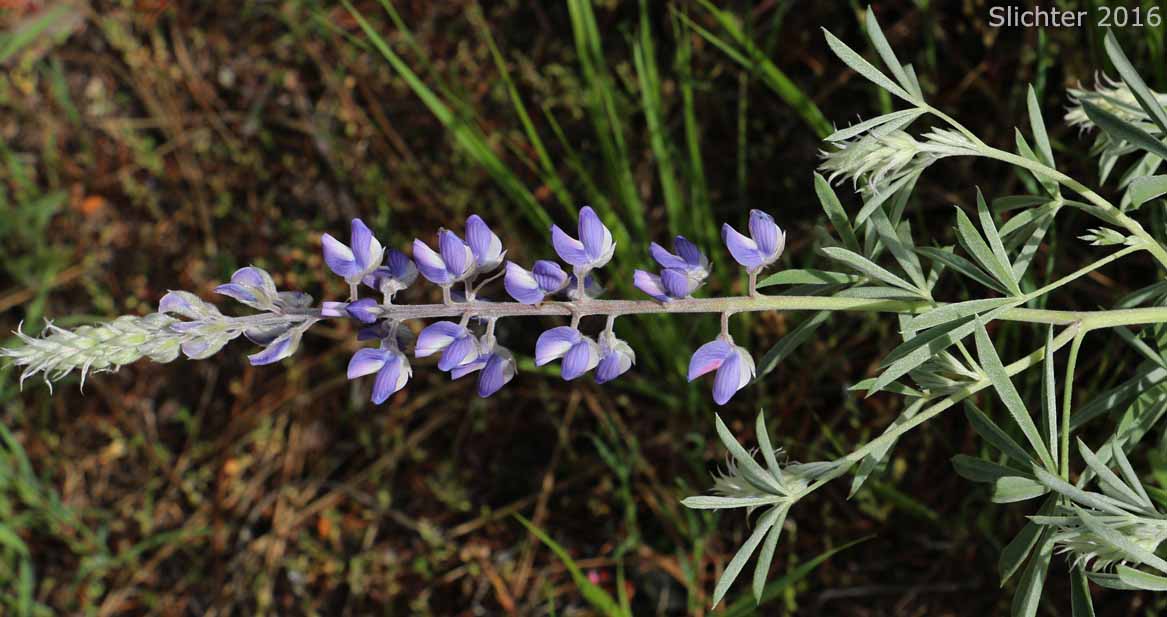 -
- 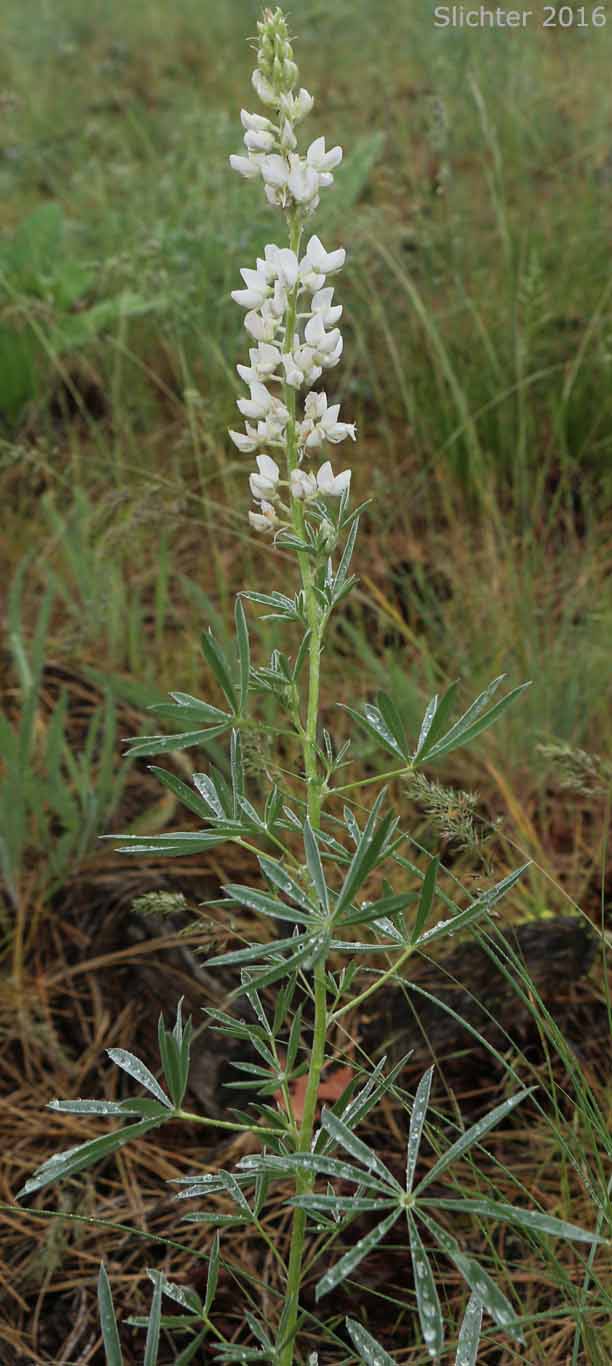
Silky lupines begining to bloom along the trail just south of the Knothead Overlook in the Little Spokane River Natural Area.........May 9, 2016.
 -
- 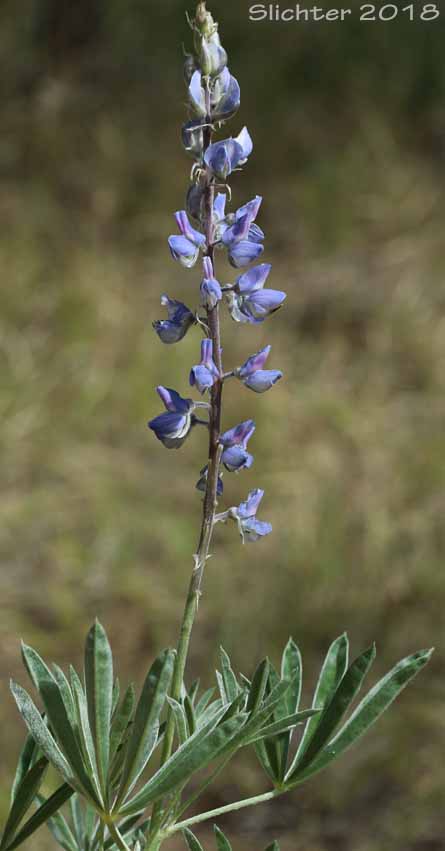
Silky lupine as seen at left in Sourdough Gulch, Asotin Wildlife Area, Asotin County, WA..........June 3, 2017. The photo at right shows silky lupine blooming in open pine forest on Missoula Flood sand bars between Fivemile and the Little Spokane River, Spokane County, WA.......June 29, 2018.
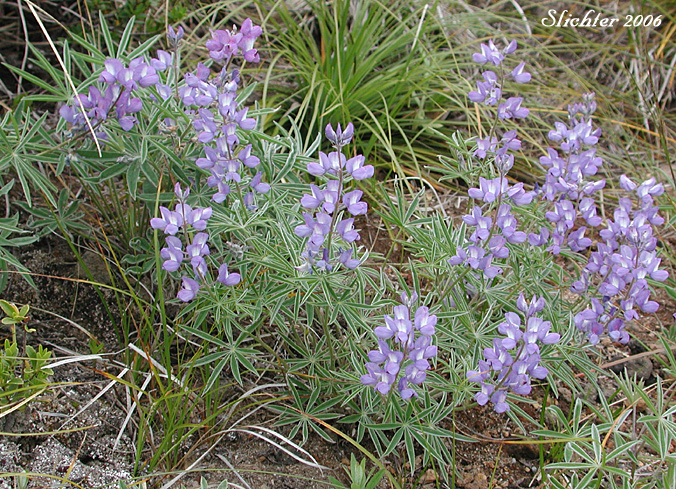
The photo above shows the form of silky lupine (variety flexuosus) as seen on Mt. Adams in the Cascade Mts.
Paul Slichter
 The photo at right shows a close-up of the hairs on the back of the banner of silky lupine as seen from Zumwalt Prairie about 10 miles to the northeast of Enterprise, OR..............July 9, 2007. The amount of hairiness on the back of the banner varies greatly, from found only around the calyx to widely covering the back of the banner as seen here. Note also the butterfly egg on the calyx.
The photo at right shows a close-up of the hairs on the back of the banner of silky lupine as seen from Zumwalt Prairie about 10 miles to the northeast of Enterprise, OR..............July 9, 2007. The amount of hairiness on the back of the banner varies greatly, from found only around the calyx to widely covering the back of the banner as seen here. Note also the butterfly egg on the calyx.